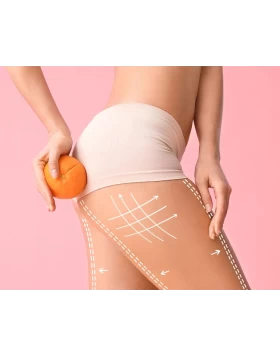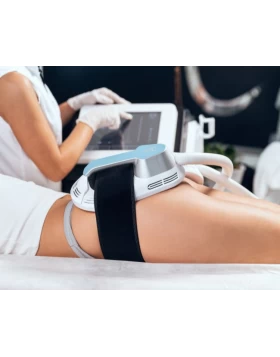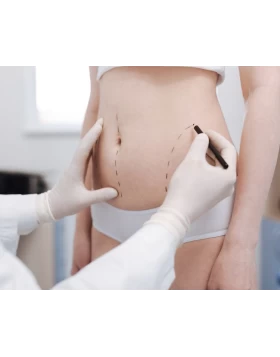F.A.S.T. LASER
The F.A.S.T (Fiber Assisted Laser Tightening) method as well as LASER-assisted lipolysis - liposculpture is a modern development of aesthetic medicine. It is performed under local anesthesia in the classic way, with the only difference being that LASER is used to break down abnormal fat deposits.
LASER lipolysis is ideal for localized areas of the body that accumulate fat such as the buttocks (buns), the inner thighs, the knees, the abdomen and the arms, while it is not an absolute indication for extensive liposuction needs. LASER lipolysis - liposculpture is also applied to more sensitive areas such as the lower eyelids, improving bags under the eyes, as well as on the neck or suprapubic area to improve the point known as the Mount of Venus.
When it comes to tightening and treating skin sagging, the action of LASER is crucial and effective. The delivery of energy to the deepest layers of the dermis is done easily and in one session with absolute safety.

Do you have additional questions about the service?
What is the aim of the treatment?
1) Regeneration of the superficial and deeper layers of the skin,
2) Improvement of skin tone,
3) Disintegration of connective diaphragms, which are responsible for the reduced elasticity of the skin,
4) Activation of the production of collagen,
5) Focused lipolysis
What are the advantages of the method?
1) Performed at the clinic with local anesthesia
2) Effective in every age group
3) Painless
4) Safe, performed by a qualified Plastic Surgeon
5) No recovery time
6) Treats localized fat and sagging in the same session
7) Results that last more than 1.5 years
8) Can be combined with other methods (Liposuction, mesotherapy, etc.)
What are the contraindications of the treatment?
There are no significant contraindications for performing the treatment. The only contraindications are recent surgery (e.g. facelift), taking anticoagulants, and the presence of local implants in the treatment area.
What are the possible side effects?
Like any surgery, F.A.S.T. has potential complications, although they are rare. These may include:
Swelling for about 1-2 weeks
Spot burn
Numbness – hypoesthesia for up to 3 weeks
Ecchymosis


 Ελληνικά
Ελληνικά


